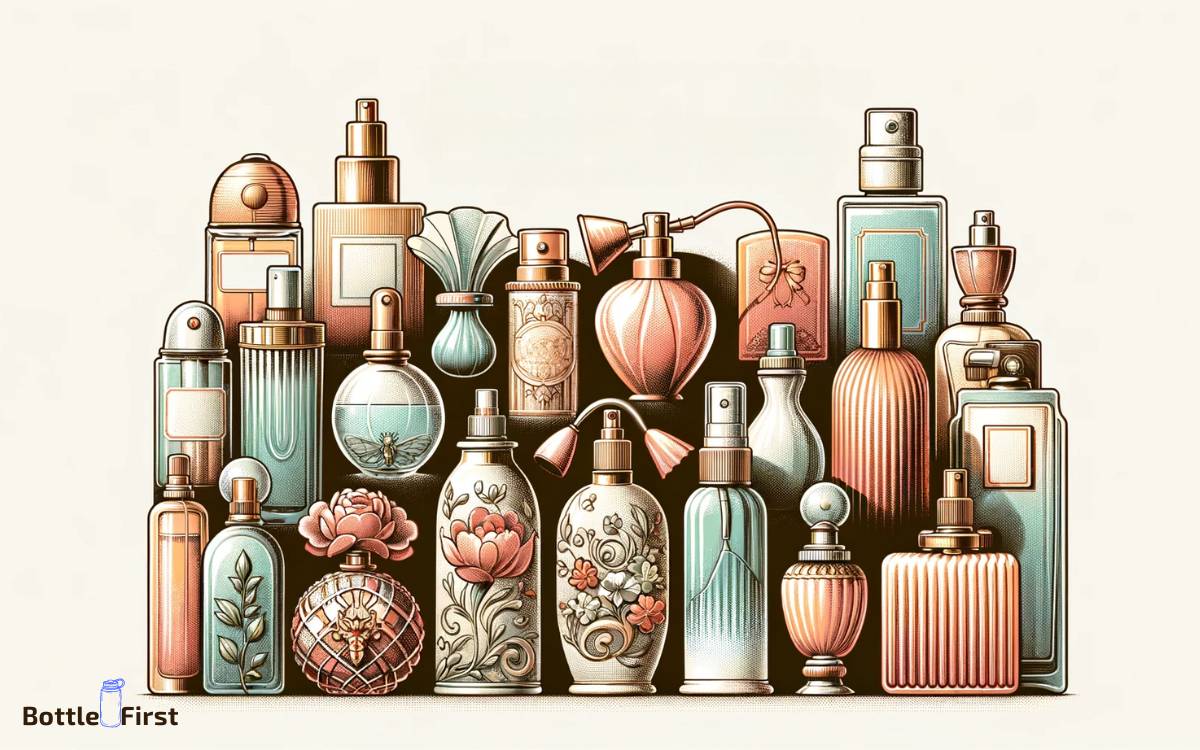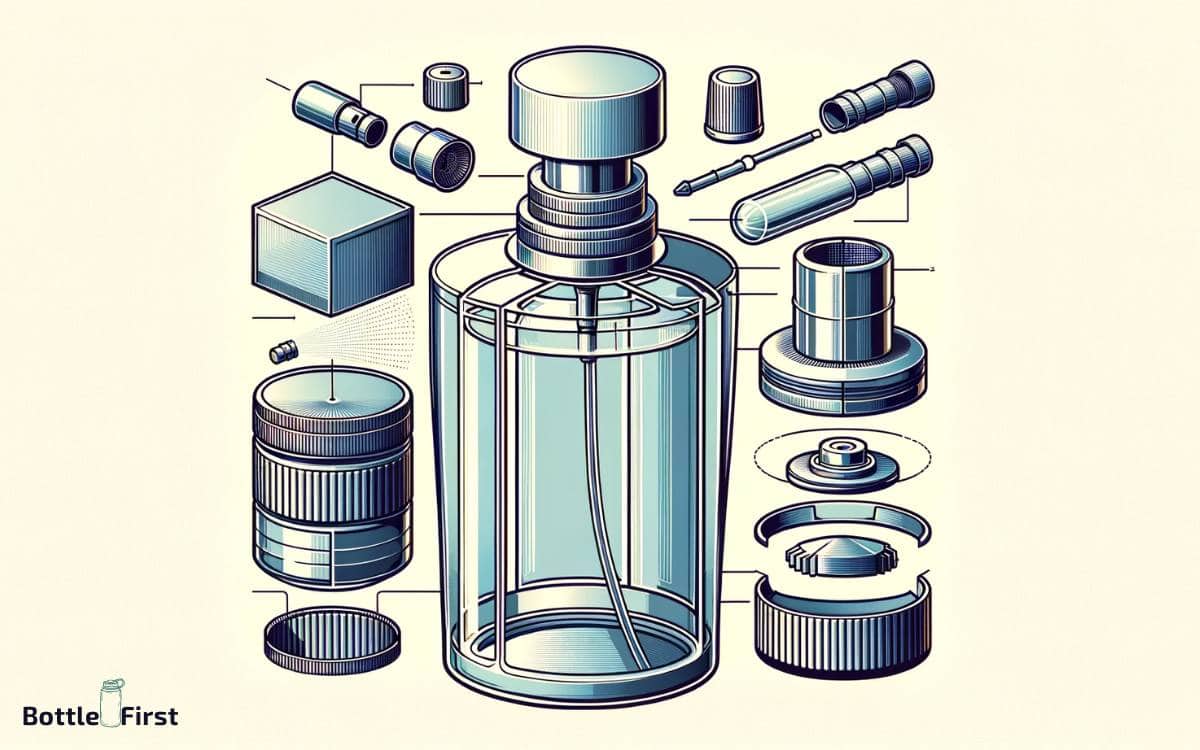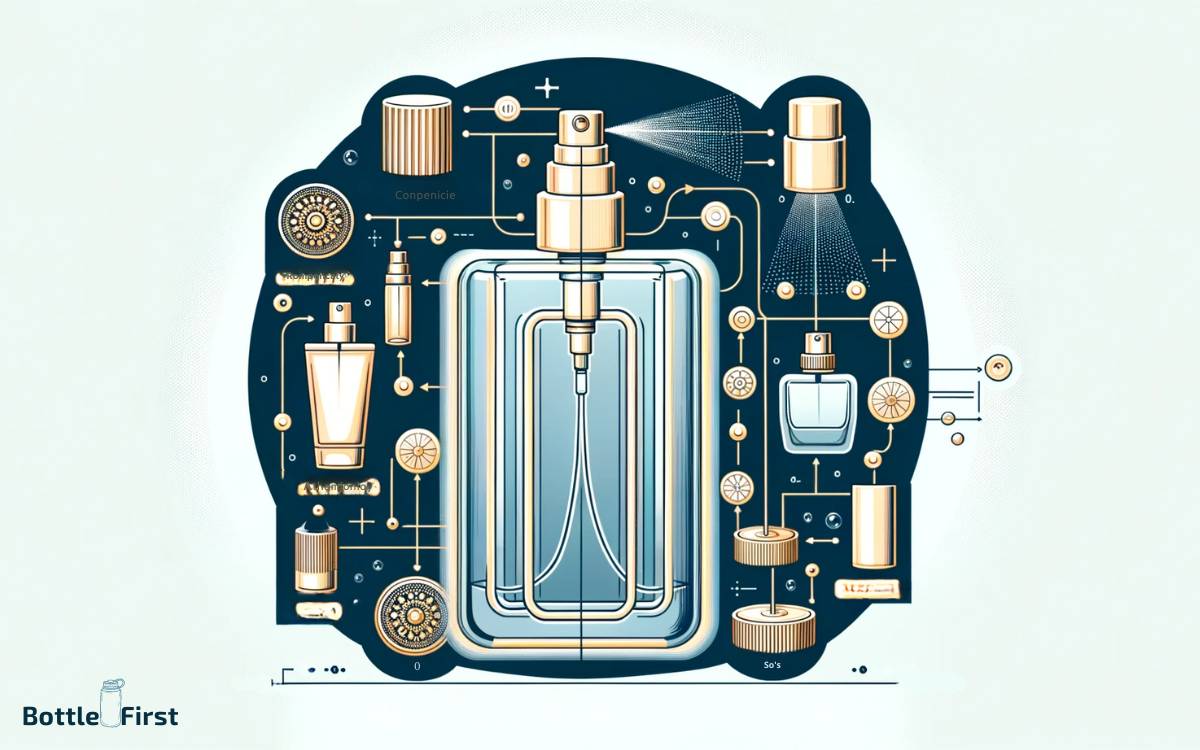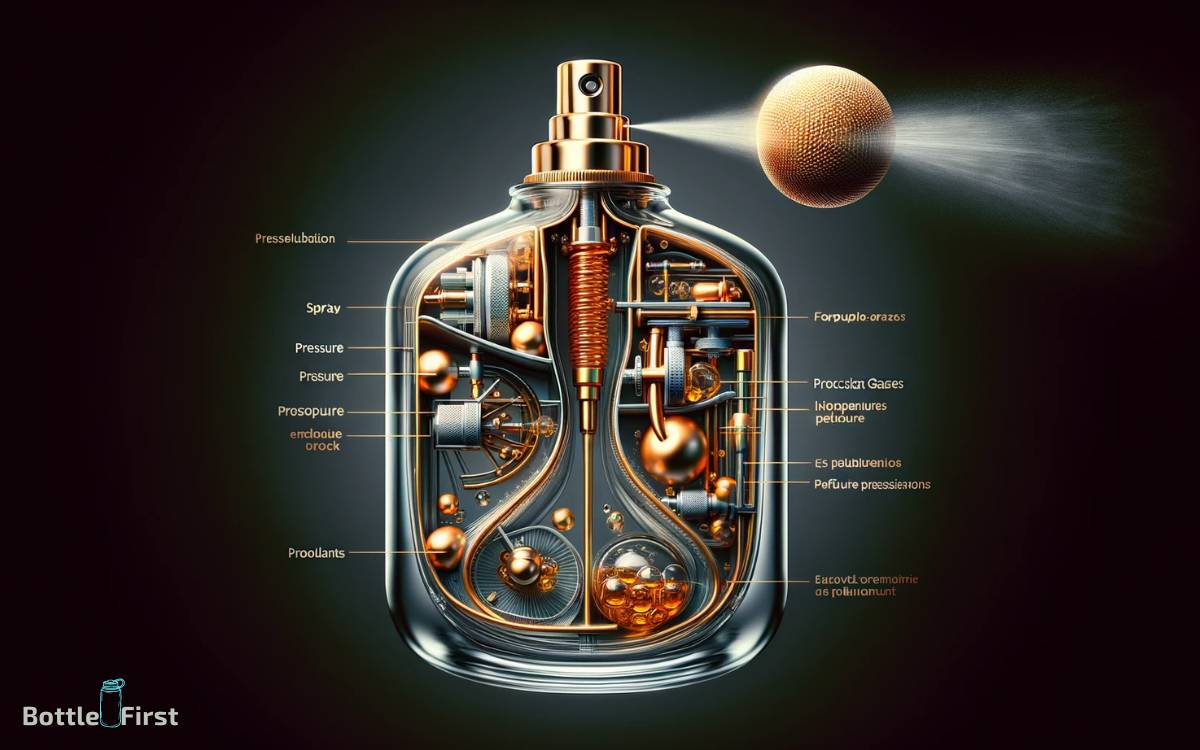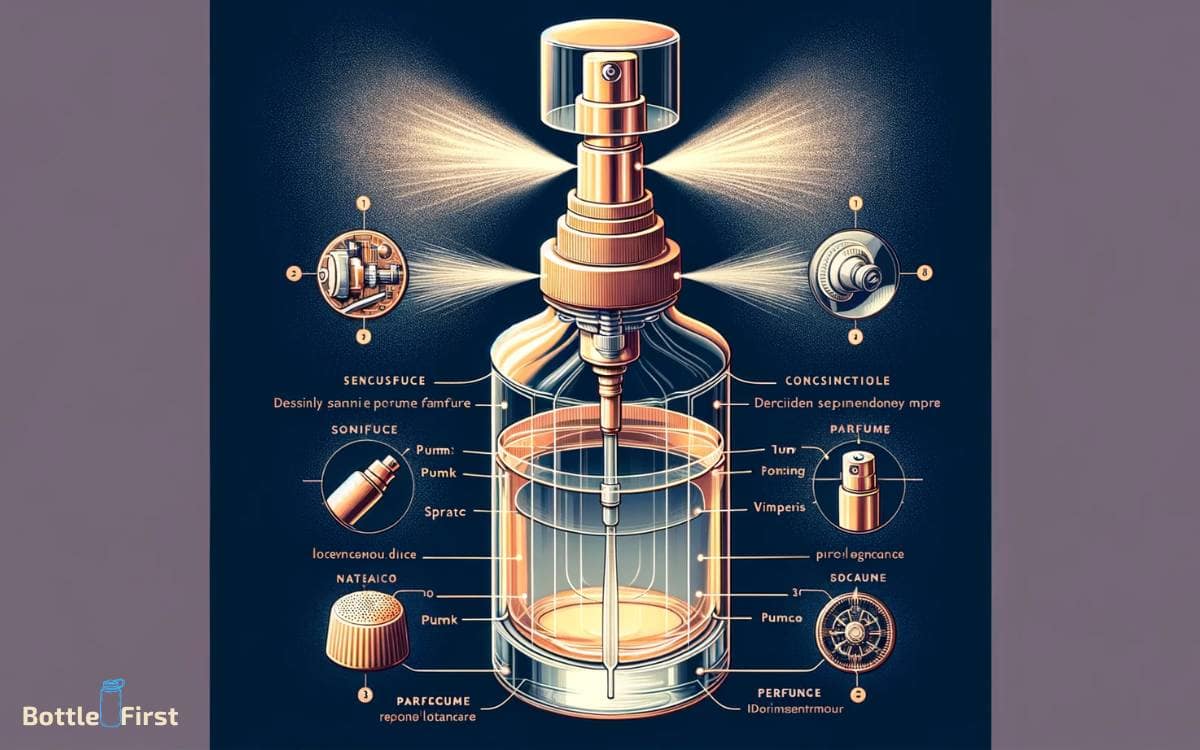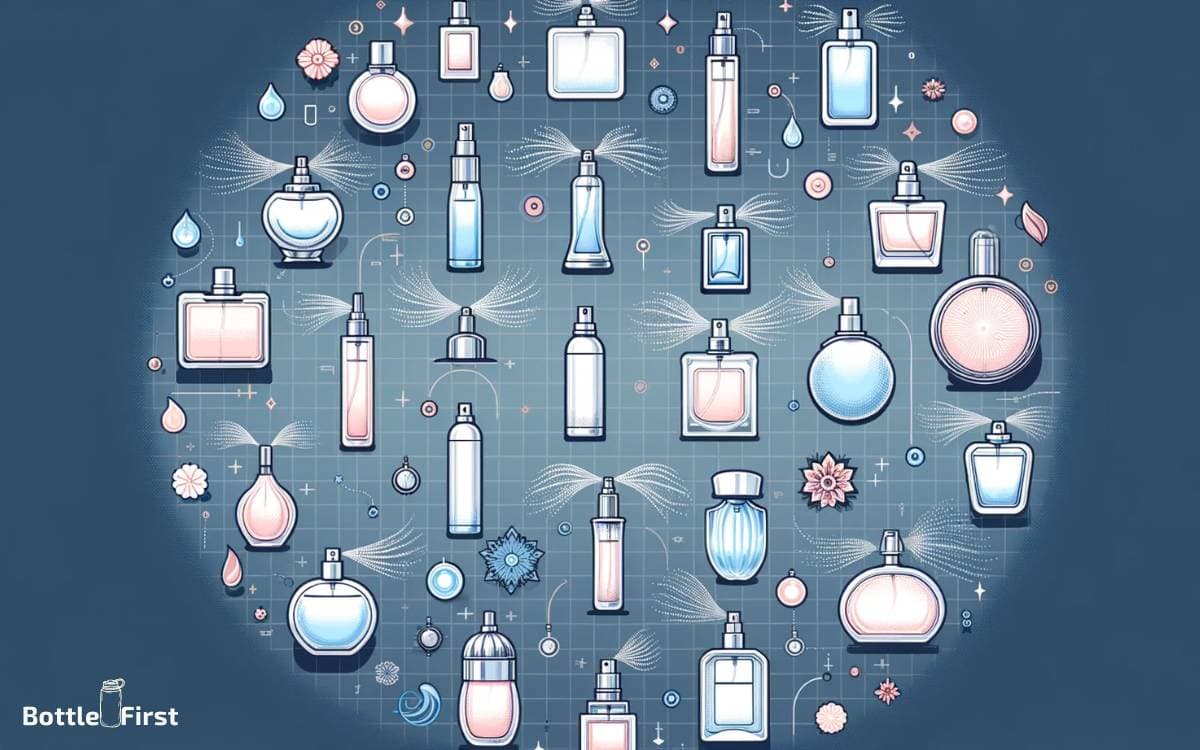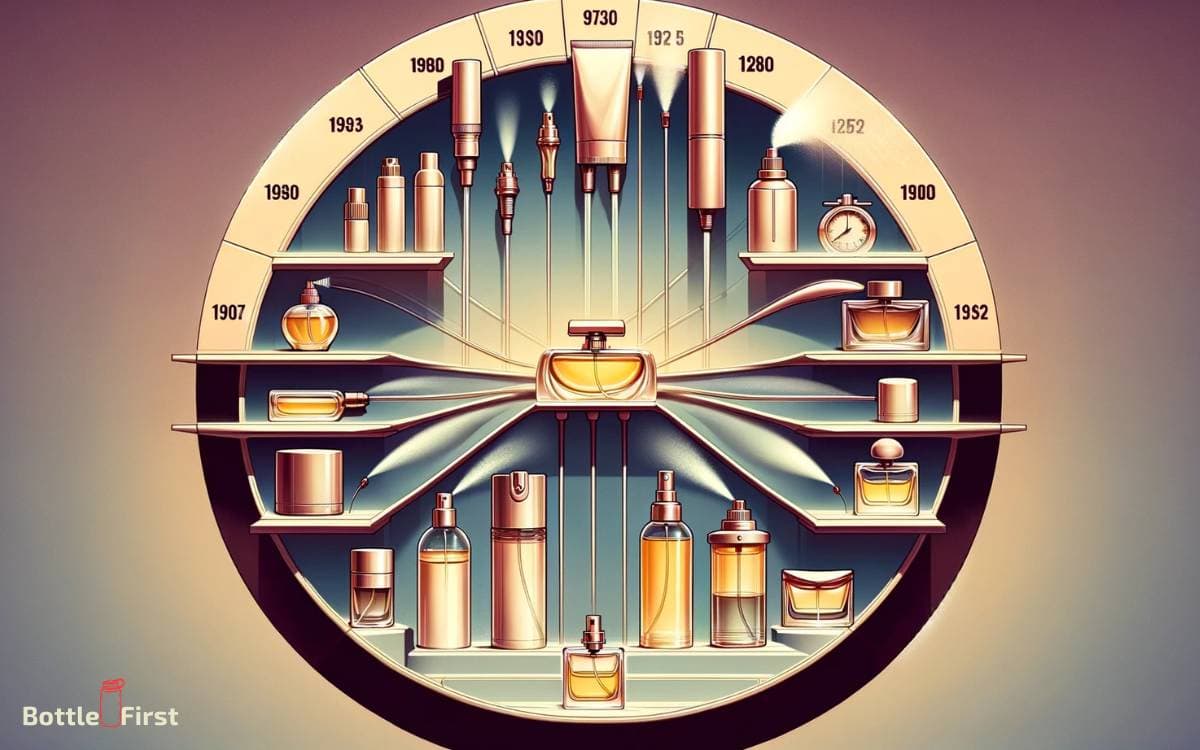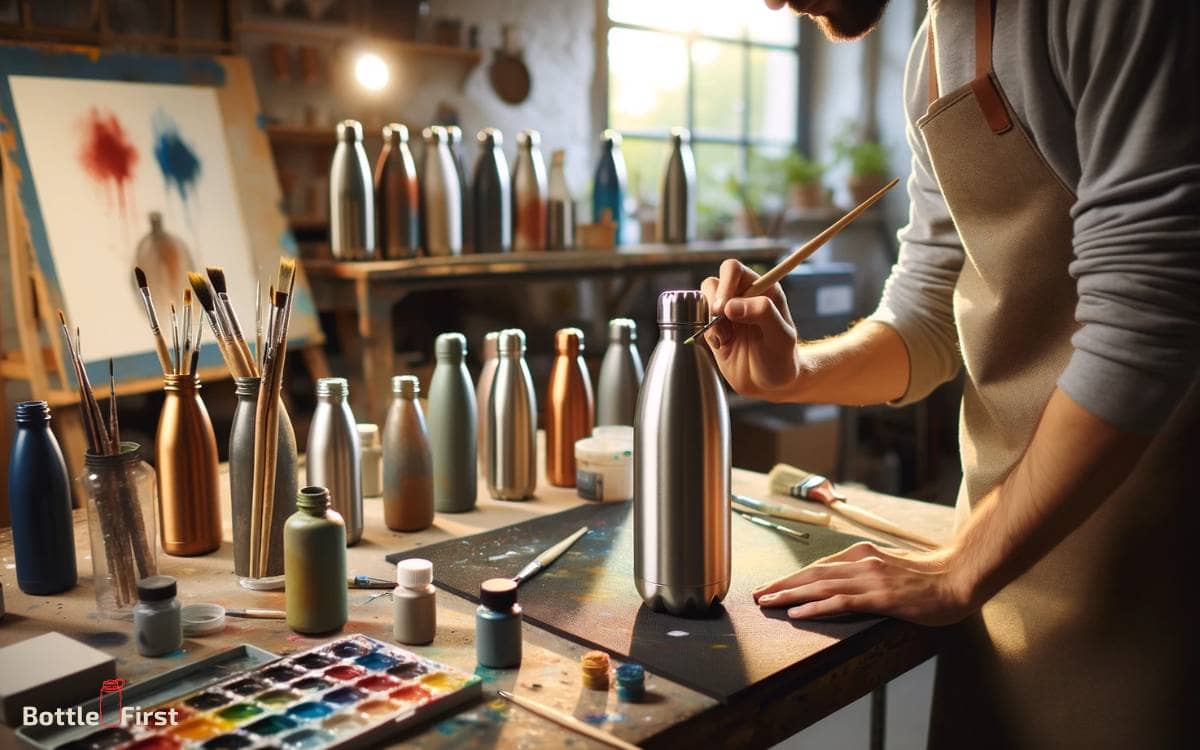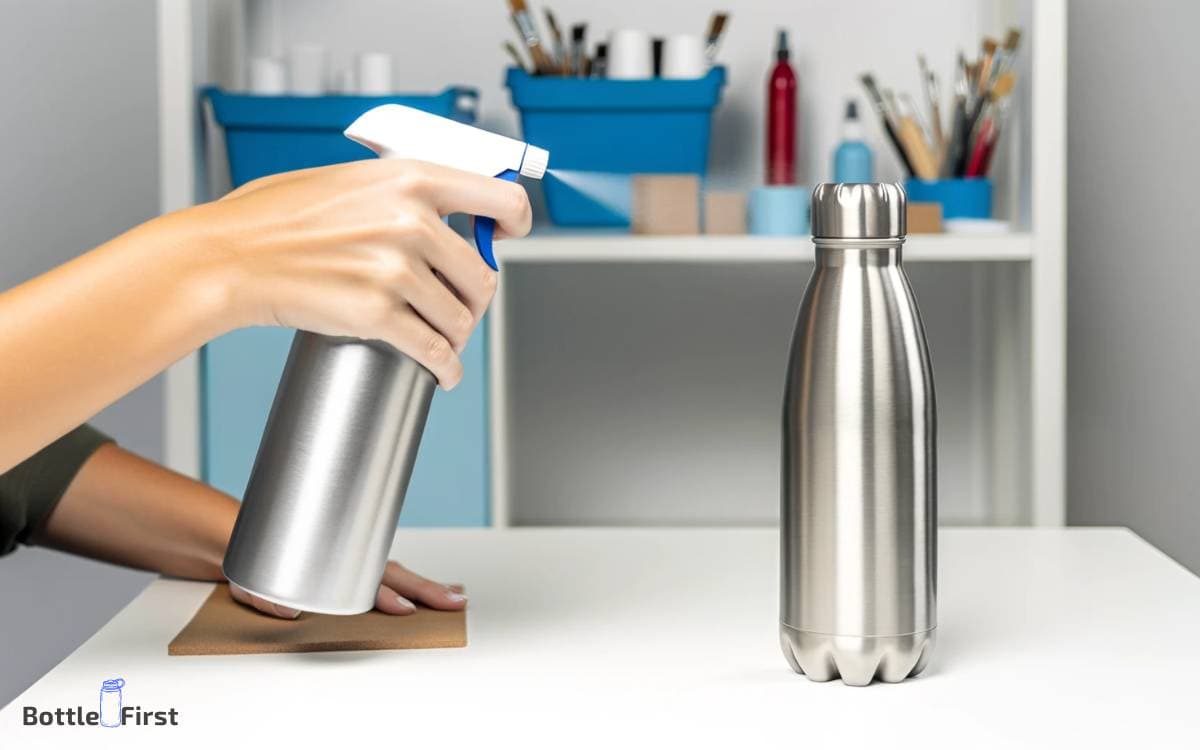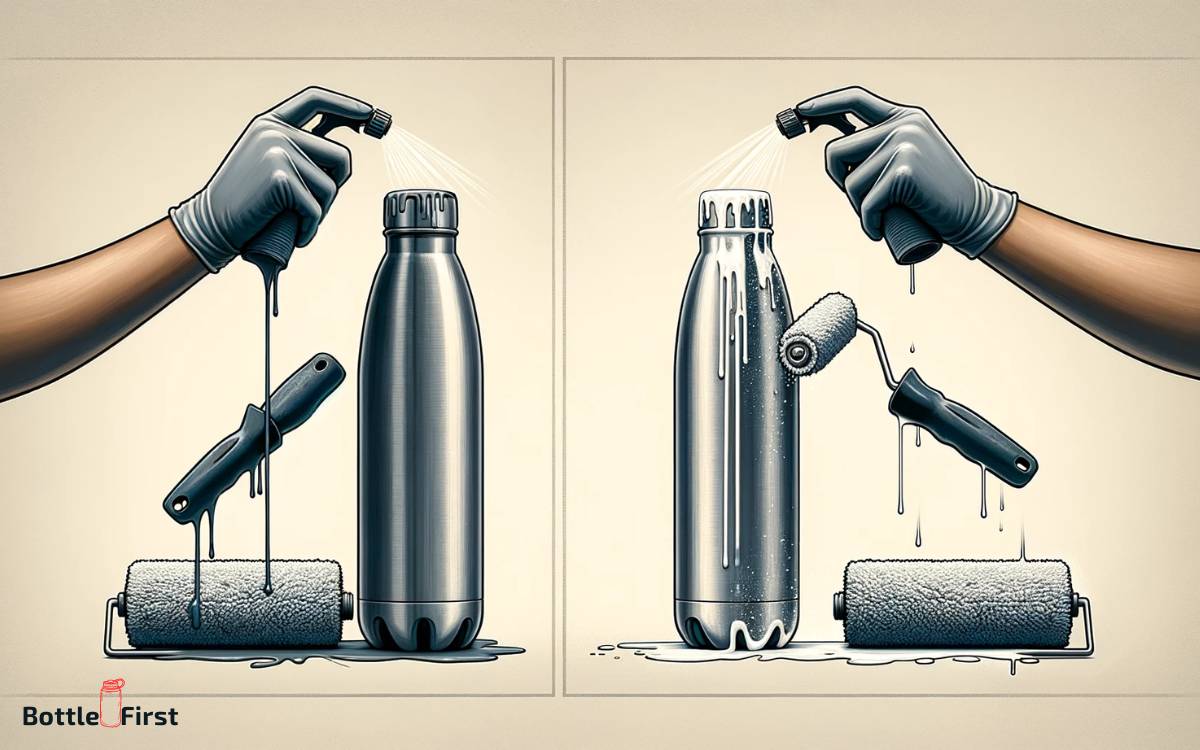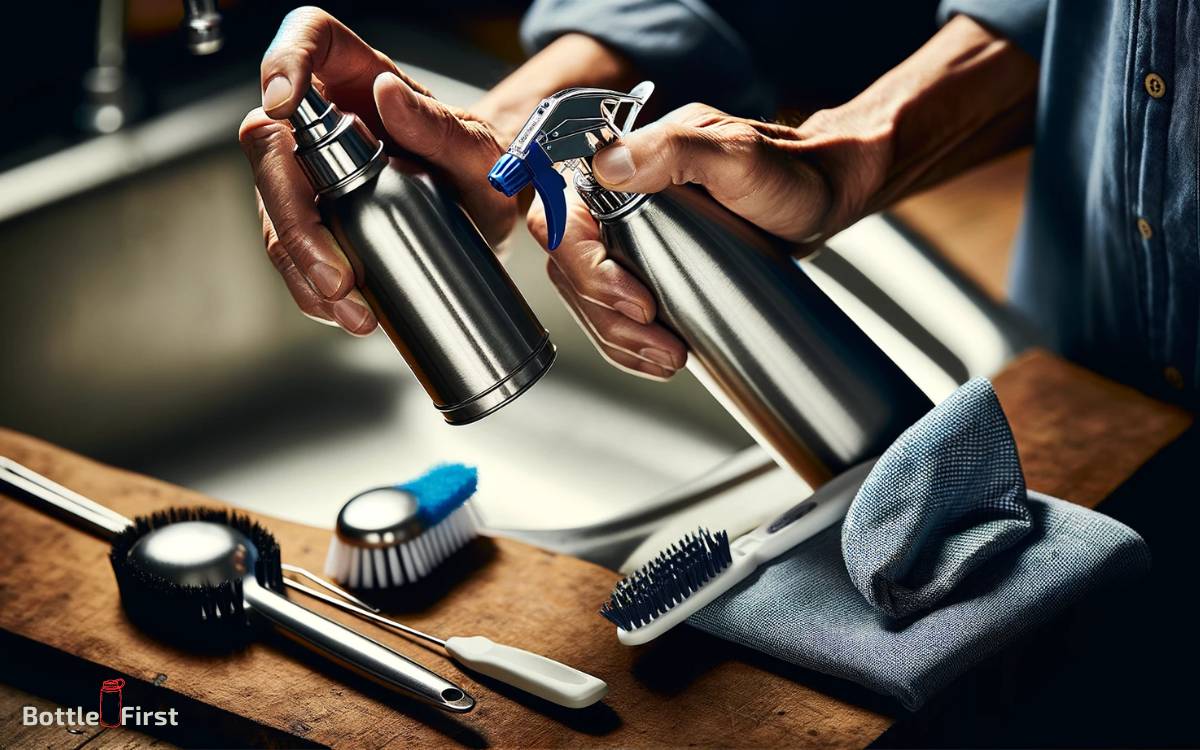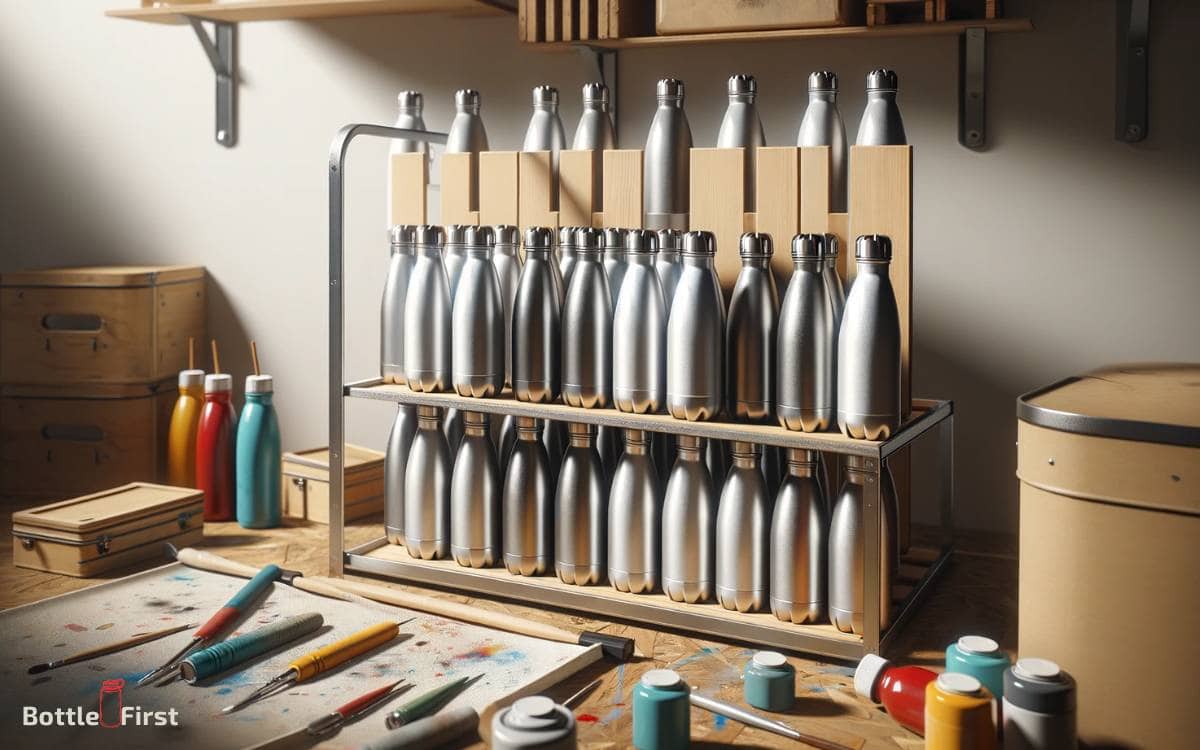How Does a Perfume Spray Bottle Work? 6 Easy Steps!
A perfume spray bottle works by utilizing a pump mechanism that creates pressure to atomize the liquid fragrance into a fine mist when the nozzle is pressed.
The perfume spray bottle consists of multiple components, including the bottle itself, a dip tube, a pump mechanism, and a nozzle.
The liquid perfume is stored in the bottle, and the dip tube extends from the pump mechanism down into the liquid.
When the nozzle is pressed, the pump mechanism generates pressure and forces the liquid perfume up through the dip tube.
As the liquid reaches the nozzle, it is atomized into a fine mist, allowing the fragrance to disperse evenly and efficiently.
The pump mechanism is the key component that allows a perfume spray bottle to function effectively. It comprises a small chamber, a spring, and a piston.
When the nozzle is pressed, the piston moves, compressing the spring and creating pressure within the chamber. This pressure forces the liquid perfume up the dip tube and out through the nozzle.
As the perfume is atomized, it forms a fine mist that spreads the scent evenly onto the skin or clothing.
The spring then returns the piston to its original position, allowing the pump mechanism to reset and be ready for the next use.
Key Takeaway
Introduction To Perfume Spray Bottles
Perfume spray bottles are a must-have accessory for perfume enthusiasts. These bottles come in different styles, shapes, and sizes, but they all have one thing in common: they dispense perfume in a spray form.
We’ll take a closer look at the definition of perfume spray bottles, their brief history, and their importance in the perfume industry.
Definition Of Perfume Spray Bottles
Perfume spray bottles are containers that hold liquid perfume and have a spray nozzle that distributes the perfume in a fine mist.
They’re generally made of glass, plastic, or a combination of both materials, and come in various sizes, from small travel-sized bottles to larger containers meant for home use.
- A perfume spray bottle consists of a container and a spray nozzle that distributes the perfume in a fine mist.
- These bottles can be made of glass, plastic, or a combination of both materials.
- Perfume spray bottles come in different sizes, depending on their intended use.
Brief History Of Spray Bottles
Spray bottles have been around for quite some time. The first manually operated sprayers were used in the late 1800s for applying medicines, but it wasn’t until the early 20th century that the first atomizer sprayers were produced.
These sprayers used a piston to draw liquid up into a chamber, which was then expelled through a nozzle using compressed air.
The use of atomizer sprayers for perfume became popular in the 1920s when some of the world’s most famous perfume houses began using them. The first perfume spray bottle was created by établissements bétourné in france in 1910.
- Spray bottles have been around for a long time.
- The first atomizer sprayers were produced in the early 20th century.
- Atomizer sprayers were first used for perfume in the 1920s.
Importance Of Spray Bottles In The Perfume Industry
Spray bottles revolutionized the way we apply perfume. They made it easier to apply the right amount of perfume and helped to improve its longevity.
Spray bottles have also made it easier for people to sample different perfumes before buying them.
In addition, spray bottles are more hygienic than other methods of perfume application, such as dabbing, which can introduce bacteria to the perfume.
The use of spray bottles has become an integral part of the perfume industry, and many perfume manufacturers design their bottles to be visually appealing and suitable for gifting.
- Spray bottles have revolutionized perfume application.
- They make it easier to apply the right amount of perfume and improve its longevity.
- Spray bottles are more hygienic than other methods of perfume application.
- They have become an integral part of the perfume industry and are often designed to be visually appealing.
Components Of A Perfume Spray Bottle
Perfume spray bottles have come a long way from their original designs, but the basic concept remains the same, with various components working together to do the job they were made for.
We will explore key components of perfume spray bottles and how they contribute to the overall function of the bottle.
Explanation Of Major Components Of Spray Bottles
- Atomizer: A small pump that is situated at the bottom of the bottle, responsible for distributing the fragrance in a fine mist.
- Spray nozzle: This component controls the direction and width of the fragrance mist being released; it may be adjustable or have a fixed orientation.
- Dip tube: This is a thin, narrow tube that goes from the atomizer to the bottom of the bottle. It enables the fragrance in the bottle to flow towards the atomizer.
How Each Component Contributes To The Overall Function Of The Bottle
- Atomizer: By pumping air from the top of the bottle down through the dip tube, it forces the fragrance to travel up and out through the nozzle, releasing a fine mist of fragrance.
- Spray nozzle: This component controls the direction and amount of fragrance released, making sure that the fragrance is not released too quickly or too slowly.
- Dip tube: Without the dip tube, the fragrance would not be able to flow to the atomizer, making it impossible to distribute.
Materials Used To Make Spray Bottles
- Glass: Glass is commonly used in the production of spray bottles, providing a durable, transparent, and versatile alternative.
- Plastic: Plastic spray bottles are popular because they are lightweight and shatterproof, unlike glass. Plastics also allow for more creative and unique designs.
- Metal: Metal spray bottles are uncommon, but they are used due to their low reactivity with fragrances and durability. Aluminum is the most commonly used metal due to its lightweight and corrosion-resistant properties.
The components of a perfume spray bottle are essential and work together to distribute the fragrance effectively. The materials used to make them vary, allowing for greater flexibility and creativity in design.
With the growing popularity of perfumes, spray bottles have become a key element in the fragrance industry.
The Science Behind Perfume Aerosol
Perfume is a sophisticated and intricate creation that requires a number of components to work together.
One of the key pieces is the perfume spray bottle, which disperses the scent in a controlled and measured manner.
The science behind perfume aerosol is fascinating, and involves a combination of pressure, propellants, and a carefully crafted formula.
Explanation Of How The Perfume Is Transformed Into An Aerosol
A perfume spray bottle is essentially a tiny aerosol can, with a few additional components that help to regulate the release of the fragrance.
Here are the key steps that allow the perfume liquid to be transformed into an aerosol:
- When you press down on the nozzle of the perfume spray bottle, you’re actually activating a small pump that sucks liquid up from the bottom of the bottle.
- A valve then opens, which allows the liquid to escape into a small chamber.
- Inside this chamber, the liquid is mixed with a payload of compressed gas called a propellant. This creates a high-pressure environment within the chamber.
- At the top of the chamber is a small opening that leads to the nozzle of the spray bottle. When you press down on the nozzle, a small amount of the high-pressure mixture is released through the opening, atomizing the liquid into a fine mist.
- This mist is then propelled out of the nozzle and onto your skin or clothing.
The Role Of Pressure And Propellants
Pressure and propellants play a key role in the function of perfume spray bottles.
Here are some key points to know:
- The propellant in a perfume spray bottle must be carefully chosen to ensure that it doesn’t react with the fragrance or the materials of the bottle itself.
- Because the propellant is under high pressure, it creates a force that drives the perfume liquid out of the bottle and through the nozzle.
- The amount of pressure in the bottle can affect how fine the mist is, as well as how far it can travel.
- The quantity and type of propellant used can also affect the amount of fragrance that is dispensed with each spray.
By understanding the science behind perfume aerosol, you can appreciate the intricate work that goes into creating these delicate yet powerful fragrances.
Whether you’re choosing a perfume for yourself or as a gift for a loved one, the spray bottle is an essential part of the experience – and now you know just how it works!
The Anatomy Of A Perfume Spray
Have you ever wondered how a perfume spray bottle works? It seems so effortless when you press the nozzle and a refreshing mist of fragrance is released.
But have you ever taken a closer look at the spray bottle’s anatomy?
In this post, we will dissect the spraying process and explain how the components work together to produce a fine mist of perfume.
A perfume spray bottle is made up of several components that work together to deliver the perfect spritz of scent.
Here are the different parts that make up a perfume spray bottle:
- Nozzle: The nozzle is the part of the perfume spray bottle that you press to release the fragrance mist.
- Dip tube: The dip tube is a long plastic tube that reaches the bottom of the perfume bottle, ensuring that the fragrance is drawn up from the bottom.
- Spray pump: The spray pump is located inside the neck of the perfume bottle and consists of a piston, spring, and ball bearing, which work together to pressurize and atomize the fragrance.
- Bottle: The bottle is where the perfume is stored and can be made from different materials such as glass, plastic or metal.
Step-By-Step Dissection Of The Spraying Process
The spraying process consists of several steps that work together to produce the fine mist of perfume.
Let’s take a closer look at how this process works:
- Pressure build-up: When you press the nozzle, it activates the piston in the spray pump, which forces air into the bottle, building up pressure that forces the fragrance up the dip tube.
- Fragrance atomization: As the fragrance rises up the dip tube, it is atomized by the spray pump, which breaks the liquid up into tiny droplets.
- Scent diffusion: The tiny droplets of fragrance are released through the nozzle and diffuse into the air, creating a mist of scent.
How The Components Work Together To Produce A Fine Mist Of The Perfume
Now that we’ve looked at the different components of a perfume spray bottle and the spraying process, let’s see how they work together to produce a fine mist of perfume:
- When the nozzle is pressed, it activates the spray pump inside the neck of the bottle, which then builds up pressure inside the bottle.
- The build-up of pressure forces the fragrance up the dip tube and into the spray pump’s atomizer chamber.
- The spray pump’s piston, spring, and ball bearing work together to atomize the fragrance, breaking the liquid into tiny droplets.
- The tiny droplets of fragrance are then released through the nozzle as a fine mist, diffusing into the air, leaving behind a delightful scent.
A perfume spray bottle may seem like a simple device, but it’s made up of several intricate components that work together to produce a fine mist of scent.
Knowing the anatomy and the spraying process can help you to make the best use of your perfume and enjoy the fragrance at its best.
Types Of Perfume Spray Bottles
Perfumes have been around for centuries, with evidence of ancient egyptians using scented oils for their personal adornment.
Today, perfumes come in a variety of forms, with spray bottles being one of the most popular. But how do perfume spray bottles work?
And what are the different types of perfume spray bottles available? Let’s explore.
Different Types Of Perfume Spray Bottles
The perfume spray bottle is a familiar item to most people, needed in order to diffuse a fine mist of fragrance. But there are several different types of perfume spray bottles, each with their own unique features.
Here are some of the different types of perfume spray bottles available:
- Glass perfume spray bottles: These bottles are the most traditional and commonly used for fragrances. Glass bottles come in various shapes and sizes. Some brands design their bottles with unique markings and shapes to differentiate their product.
- Plastic perfume spray bottles: Plastic bottles are light and durable, making them perfect for travel. However, plastic can be prone to breaking, especially if dropped or put under too much pressure.
- Metal perfume spray bottles: These bottles are less common but are highly durable and more suitable for men’s fragrances. Metal bottles keep the fragrance fresh for longer and are perfect for those who want fragrances that last longer.
- Travel perfume spray bottles: Perfume enthusiasts who travel frequently might want to consider buying a compact travel perfume spray bottle. These bottles are designed to be small, portable and refillable.
The Variations Between Types And Their Effect On Spray Performance
While it may seem that the type of perfume spray bottle doesn’t make much of a difference, there are subtle variations that can impact the performance of the spray.
Here are some of the key points to keep in mind:
- Glass bottles tend to have a finer spray and a more subtle fragrance release than plastic or metal bottles.
- Plastic bottles can sometimes create a large droplet spray that can result in wet spots on clothing instead of fine mist.
- Metal bottles often release a stronger blast of fragrance than other types of bottles but the fragrance can also disappear faster if left without a cap.
- The size and shape of the bottle can also affect the spray’s performance. Narrow and long bottles can create a stronger spray, while wider bottles can create a more spread out mist.
When choosing a perfume spray bottle, it is essential to consider the type of bottle that will best suit your fragrance needs.
Whether a glass, plastic, metal, or travel spray bottle, each type has its unique features that will impact fragrance release and spray performance.
Longevity Of Fragrance
We all have our favorite perfume that we like to wear, and one thing that we can all agree on is that we want its scent to last as long as possible throughout the day.
But did you know that the longevity of the fragrance all depends on the way we apply it?
In this blog post, we’ll discuss the role of spray bottles in enhancing the longevity of fragrances, and why a spray bottle is a better option than other perfume application methods.
The Role Of Spray Bottles In Enhancing The Longevity Of Fragrances
A spray bottle is an essential tool for fragrance application because it helps to atomize the liquid, producing a fine mist of tiny droplets that evenly distribute over the skin.
This mist allows the fragrance to evaporate slowly, so the scent lasts longer throughout the day.
Here are some points to consider:
- Spray bottles emit even and consistent mist that spreads the scent evenly on the skin. This enhances the longevity of the fragrance.
- Spray bottles minimize the amount of fragrance that comes into contact with the skin, thereby reducing the risk of irritation and making sure the scent can last as long as possible.
- Spray bottles are more efficient to use, as they are easy to control and can be adjusted to dispense a smaller or larger amount of the fragrance. This ensures that you use just the right amount to maintain the fragrance’s longevity without wasting it.
Why A Spray Bottle Is A Better Option Than Other Perfume Application Methods
There are other common ways to apply fragrance, such as applying it directly to the skin or using a rollerball applicator. However, these methods are not as effective as using a spray bottle.
Here’s why:
- Applying fragrance directly to the skin makes it difficult to control the amount of the fragrance applied, which can result in overuse, leading to irritation, and reduced longevity.
- Rollerball applicators are often inconsistent and can be difficult to distribute evenly. They are also not as efficient as spray bottles, which may require multiple applications to achieve the desired effect.
Using a spray bottle enhances the longevity of fragrances by producing a fine mist that evenly distributes through the skin.
It’s also a better option than other perfume application methods because it’s more efficient, easy to control, and minimizes the amount of fragrance that comes into contact with the skin.
So, whether it’s your favorite scent or a new fragrance you’re trying, make sure to use a spray bottle for the best and longest-lasting results.
Convenience Of Application
Perfume has been used for centuries to enhance our natural scent or to make a statement about our personality. Perfumers have long been researching the perfect way to create, bottle and dispense fragrances.
Today, one of the most popular and convenient methods to apply fragrance is through the use of spray bottles. Spray bottles offer a simple, clean, and effective way to apply perfume.
Easy Application Of The Perfume With A Spray Bottle
Spray bottles have revolutionized the way we apply perfume. They make applying perfume effortless and convenient.
Here’s how:
- The spray mechanism releases a fine mist that can be evenly distributed over the skin or clothes.
- You can easily control the amount of perfume you apply with a spray bottle. Just one or two sprays are sufficient.
- The size and portability of the spray bottle make it easy to take your favorite fragrance with you anywhere.
- Spray bottles are easy to use, even for people with arthritic hands or limited mobility.
Benefits Of Using A Spray Bottle Instead Of Traditional Methods Like Rollers
There are many advantages to using a spray bottle instead of traditional methods like rollers.
Here are a few:
- Spray bottles provide a more even application of fragrance than rollers, which can often create patchiness or unevenness.
- With a spray bottle, there is less direct contact between the perfume and the skin, which can minimize allergic reactions or irritations.
- Spray bottles are more hygienic compared to rollers, which can spread bacteria and fungi if not cleaned properly.
- Spray bottles use less perfume than traditional methods, making them more cost-effective in the long run.
Spray bottles offer an easy and convenient way to apply your favorite perfume.
They are also more hygienic, cost-effective, and provide a more even application compared to traditional methods. If you haven’t tried using a spray bottle, it may be time to make the switch.
Cleaning And Sanitization
Perfume bottles are the best way to keep your fragrance fresh and long-lasting. This is because the spray dispenser creates a fine mist of perfume that disperses evenly over the skin.
However, in order to maintain the effectiveness and fragrance of the perfume, it is necessary to keep the spray bottle clean.
In this section, we will focus on the importance of cleaning your perfume spray bottle and the right techniques to sanitize it.
Following these guidelines will ensure that you get maximum use out of your perfume and keep it hygienic to use.
The Importance Of Keeping The Spray Bottle Clean
Cleaning the perfume spray bottle is necessary for a number of reasons.
Here are some key reasons why:
- Maintaining the effectiveness of the perfume: Over time, residue, dirt, and moisture can accumulate on the perfume bottle, which can reduce the fragrance’s effectiveness and longevity. Cleaning the bottle will eliminate these contaminants, keeping the perfume fresh and long-lasting.
- Maintaining the hygiene of the bottle: A perfume spray bottle that is not cleaned regularly can become a breeding ground for bacteria, which can be transferred to your skin and cause skin irritation or infection.
- Preventing clogging: The residual perfume can cause the spray nozzle to clog, which leads to uneven or no fragrance dispensed from the bottle. This can be prevented by regularly cleaning and sanitizing the bottle.
The Right Cleaning Techniques To Avoid Damage To The Bottle
While cleaning the perfume bottle is necessary, it is important to use the right cleaning method to avoid damaging the bottle.
Here are some effective cleaning techniques:
- Use a soft cloth or paper towel: When cleaning the perfume spray bottle, it is important to use a soft cloth or paper towel. These are gentle enough not to scratch or damage the bottle while cleaning.
- Avoid using water or soap: Using water or soap to clean the perfume bottle can damage the nozzle and other parts of the bottle. It is recommended to use rubbing alcohol instead.
- Remove the nozzle and clean it separately: The nozzle is the most important part of the perfume spray bottle and needs to be cleaned thoroughly. To clean the nozzle, it needs to be removed and then soaked in rubbing alcohol for a few minutes. Then, rinse the nozzle with warm water and leave it to air dry.
- Store the perfume bottle correctly: To maintain the cleanliness of the perfume bottle, it is important to store it correctly. Keep the bottle in a cool, dry place away from any heat or humidity.
Regular cleaning and sanitizing of the perfume spray bottle will keep your fragrance fresh and long-lasting, while also ensuring that it is hygienic to use.
By following these techniques, you can maintain the effectiveness of your perfume for longer and prevent contamination.
Storage Of The Bottle
Perfume has undoubtedly become an essential part of a person’s daily routine. With its pleasant fragrance, it not only elevates the mood but also boosts a person’s confidence. But, have you ever wondered, how does a perfume spray bottle work?
And, most importantly, how can you store it properly?
How To Store Your Perfume Spray Bottle For Longevity
Fragrances are delicate and require proper care to maintain their longevity.
Here are some essential tips you need to keep in mind while storing your perfume spray bottle:
- Keep the bottle away from direct sunlight: Sunlight can break down the chemical composition of perfumes. Hence, always store your perfume bottle in a cool and dark place. A closet or drawer would be an ideal place to store your perfume.
- Avoid exposure to heat: Heat can also affect the scent of your perfume and lead to spoilage. Don’t store your perfume bottle in a place that experiences frequent temperature changes, such as near air-conditioning vents, windowsills, or bathrooms.
- Keep the bottle away from moisture: Moisture can damage your perfume bottle and affect the scent. Hence, avoid storing your perfume in a bathroom or any damp area. Keep it in a dry and cool place.
- Use the original bottle: Always store your perfume in its original bottle. Avoid transferring the fragrance to another bottle, as it can lead to air exposure, resulting in the loss of the scent’s quality.
- Do not shake the bottle: Contrary to popular belief, shaking the perfume bottle can lead to air exposure, affecting the quality of the fragrance. Hence, avoid shaking the bottle.
- Check the bottle’s lid: Make sure the bottle’s lid is tightened correctly to avoid leakage. Perfume that leaks can damage the bottle and result in a loss of the scent’s quality.
By following these simple tips, you can ensure that your perfume spray bottle remains in the best condition and retains its pleasant fragrance for a long time.
Happy spraying!
Conclusion
As we come to the end of this blog post, it’s clear that spray bottles have revolutionized the perfume industry, making it easier to apply fragrances on the go.
The common mechanism that governs perfume spray bottles is quite simple, and our understanding of this mechanism helps us to maintain and use the bottles in a more effective and efficient manner.
Whether it’s a glass or plastic bottle, the pump, nozzle, and cylinder all play vital roles in perfuming your body.
By using the right amount of pressure and pump actions, you can also ensure that your perfumes last longer and bring out the desired fragrance notes.
It’s no wonder that spray bottles have become a staple in perfume users’ lives and will undoubtedly continue to be so for years to come.
So keep spraying and enjoying the scents that make you feel confident and refreshed!


